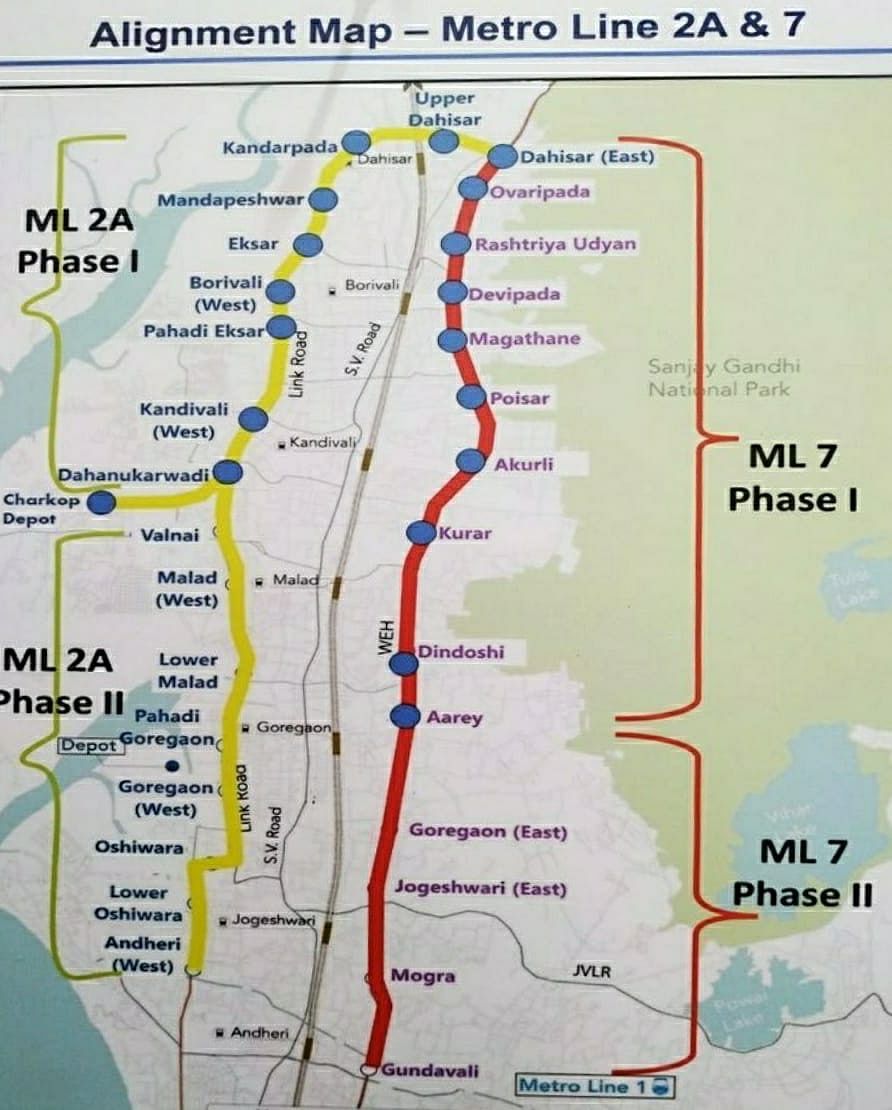Snapshot
-
The Mumbai Metro lines 2A and 7 are now under the supervision of the Commission of Metro Rail Safety (CMRS). Commercial operation on the entire line will begin once CMRS certification of approval is received.
According to the Metropolitan Region Development Authority(MMRDA) , the two new Mumbai Metro lines 2A (Dahisar to Andheri West DN Nagar) and 7 (Dahisar East to Andheri East) are expected to be fully operational in January 2023.
The entire civil work, as well as system works of both the metro lines, have been completed, the MMRDA said in a release.
“The entire civil work and the system works of the metro lines have been completed and soon the second phase of the metro 2A and 7 will be in service of Mumbaikars,” said SVR Srinivas, metropolitan commissioner of MMRDA.
He said these lines will be connected with the first metro corridor of Mumbai connecting the Versova-Andheri-Ghatkopar stretch.
The commercial run of Line-2A and Line-7’s Phase I (Dahanukarwadi-Dahisar-Aarey) began in April 2022.
The Mumbai Metro Line-2A connects Dahisar to DN Nagar, while Line-7 connects Dahisar East to Andheri East. Both lines have a total length of 35 kilometres, with only a 20-kilometre stretch between Aarey and Dhanukarwadi.
The MMRDA obtained a provisional trial run certificate from the Research Designs and Standards Organisation (RDSO).
The Mumbai Metro lines 2A and 7 are now under the supervision of the Commission of Metro Rail Safety (CMRS). Commercial operation on the entire line will begin once CMRS certification of approval is received.
Before opening the corridor to passengers, the CMRS certification includes supervision of the tracks, signalling, electrical systems, and civil works.
Upon completion, Metro lines 2A and 7 are expected to carry 11.37 lakh passengers per day by 2031, according to the MMRDA.
The completion cost of Metro line 2A is Rs 6,410 crore, while that of Metro line 7 is Rs 6,208 crore. The Asian Development Bank and the National Development Bank are the funding agencies for both lines, reports Indian Express.
The Prime Minister laid the foundation stone for both projects in October 2015, costing Rs 12,618 crore.
From April 2022, the 9.5 km-long portion between Dahisar east to Dahanukarwadi of the 18.6 km long 2A corridor between Dahisar east to DN Nagar (Yellow Line) is operational.
Similarly, the 9.75 km long portion between Dahisar (east) to Aarey Colony of the 16.5 km metro stretch between Dahisar (east) to Andheri Highway, known as Red Line, is operational.
Mumbai Metro Line 2A (Dahisar – DN Nagar)
Metro Line-2A from Dahisar to DN Nagar is 18.6 km long, elevated corridor with 17 stations.
It will connect to Metro Line 1 (Ghatkopar to Versova), the existing Metro Lines 2B (D N Nagar to Mandale) and 7 (Andheri (E) to Dahisar (E)), and Metro Line 6 (Swami Samarth Nagar to Vikhroli).
The maintenance depot was built on 16.40 hectares of land in Charkop/Malwani for train stabling.
This project will help to alleviate traffic congestion on one of Mumbai’s busiest routes (New Link Road) from Dahisar (E) to DN Nagar.
It will allow for seamless and efficient interchange with the suburban rail system and the MRT system at Dahisar and D N Nagar. This project will connect the Western, Central, and Northern Suburban Mumbai areas.
Mumbai Metro Line 7 (Andheri East – Dahisar East)
Metro Line-7 runs 16.5 kilometres from Andheri (E) to Dahisar (E) and has 13 stations.
The project will connect the existing Western Express Highway, Metro Line 1 (Ghatkopar to Versova), Metro Line 2A (Dahisar to D N Nagar), and Metro Line 6 (Dahisar to D N Nagar) (Swami Samarth Nagar to Vikhroli).
It will allow for seamless and efficient interchange with the suburban rail system and the MRT system at Andheri, JVLR, and Dahisar

Metro Line-7 will connect Central Mumbai to the Northern Suburbs of Mumbai. It will provide rail access to the Mumbai International Airport (CSMIA), the SEEPZ, the National Park, and other commercial and geographic landmarks.
Depending on road conditions, it should reduce current travel time by 50 per cent to 75 per cent.

